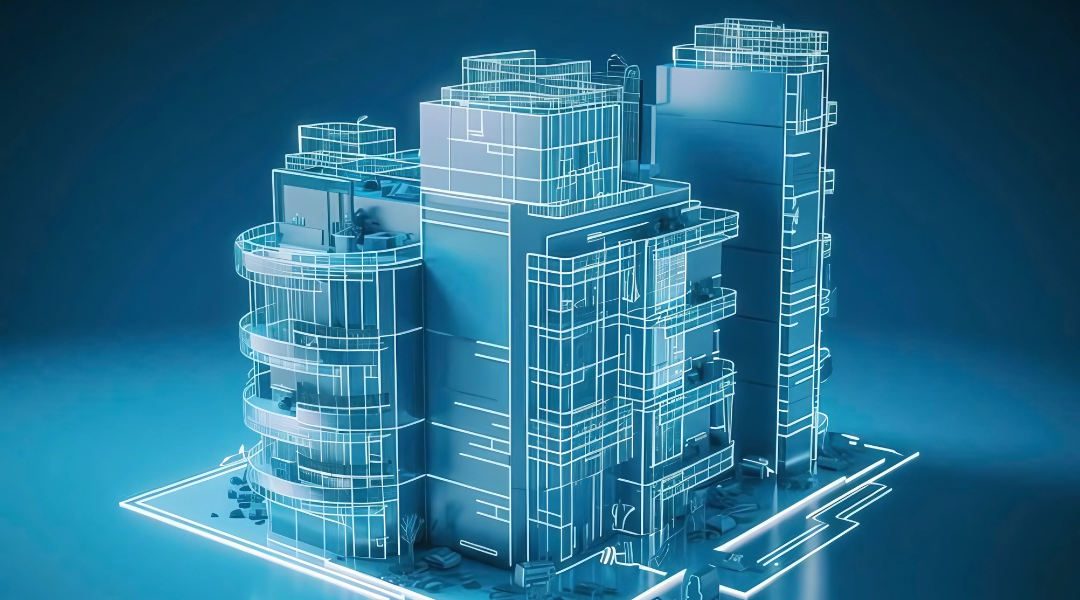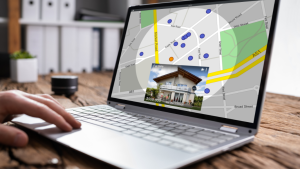The real estate industry is undergoing a technological shift that is transforming how projects are designed, developed, and marketed.
Today, we’ll dive deeper into the well-known concept of Digital Twins. This technology is not only prevalent in developed economies like the U.S., Europe, and parts of Asia but is also gaining traction in Latin America.
Digital twins are virtual replicas of physical spaces that simulate and emulate all the functions of the original. This concept is becoming an essential tool for real estate professionals looking to innovate.
A Paradigm Shift in the Real Estate Sector
Recognizing that technology plays a fundamental role in real estate is the first step toward unlocking the potential of digital twins. This innovation represents the future of the industry, offering unprecedented opportunities to optimize processes and enhance property and project visualization.
The difference between traditional methods and digital twins is striking. In the past, the market relied on static blueprints, basic renderings, and in-person visits. Buyers had to imagine the final result, design modifications were costly, and marketing materials lacked interactivity.
From a commercial perspective, digital twins now allow clients to explore projects in immersive 3D environments, customize finishes, and make informed decisions before construction even begins. This technology enables real-time virtual tours without physical visits, accelerates sales cycles, and significantly reduces marketing costs.
As a real estate developer, you’ve probably wondered: Is it worth investing in a model apartment, or is a digital twin a better alternative?
It’s not just about minimizing marketing costs—it’s also about reducing go-to-market time, the period required to build a model apartment and launch the project for sale. After all, constructing a model apartment takes significantly longer than creating a digital twin from CAD plans.
Creating Value Through Simulation and Analysis
Digital twins are not just for marketing; they also play a crucial role in the early design and conceptualization stages of a project. Here’s an example of their value: Traditionally, real estate developers made design and layout decisions without fully understanding how users would interact with each space. This dynamic has completely changed.
This is already a reality in several countries. In Dubai, for instance, developers use digital twins to simulate airflow behavior in new skyscrapers. These analyses reveal that strong winds can make outdoor areas uncomfortable for residents. With this information, balcony designs are adjusted before construction begins, preventing costly post-construction modifications.
This predictive capability also applies to market research. Developers can simulate different unit configurations and pricing structures to identify the most in-demand options before breaking ground.
Technical Considerations for Implementation
Adopting digital twins in the design phase requires meticulous planning and technical expertise. A high-quality 3D model, typically based on Building Information Modeling (BIM), forms the foundation of an effective digital twin. Ensuring compatibility or easy adaptation of existing models is crucial.
One of the main challenges is that many developers, especially in Latin America, still rely on 2D AutoCAD plans and static renderings, making the transition more costly.
What many developers fail to realize is that “cheap ends up being expensive”—not investing in BIM from the initial design stage results in significant time and financial losses later during construction and post-sales processes.
The solution lies in establishing BIM as the standard from the design phase.
When Are Digital Twins Profitable in Real Estate?
The return on investment (ROI) of digital twins varies depending on project type and unit price. Generally, this technology is financially viable in the following cases:
- Pre-sale projects: Digital twins allow units to be sold without the need for physical showrooms, reducing marketing costs and accelerating buyers’ decision-making.
- Large-scale developments (+$20M investment): Digital twins help validate designs with investors and secure funding.
On the other hand, for affordable housing projects under $100,000 per unit, where profit margins are tighter, investing in digital twins depends on the project’s unit volume.
Transforming Sales and Marketing Processes
Digital twins are revolutionizing marketing strategies, customer segmentation, and pricing decisions. They enable real-time immersive property visualization, demand testing with different configurations and prices, and the identification of the most attractive units.
This technology also facilitates international sales, allowing buyers to make purchasing decisions without in-person visits.
At hauzd, we help real estate developers sell their projects before construction begins through 3D virtual tours powered by digital twins, significantly reducing the need for physical showrooms.
Debunking Myths About Digital Twins in Real Estate
Several myths hinder the adoption of digital twins in real estate:
- “They are only for luxury projects.” While high-end developments were early adopters, digital twins offer benefits for all project types, especially in pre-sales and space management.
- “They are too expensive.” Although the initial investment may seem high, the ROI is substantial: faster pre-sales, reduced showroom costs, and improved customer conversion rates.
- “Buyers prefer physical visits.” More and more buyers, especially investors, prefer to explore projects digitally before making a decision. In fact, 90% of homebuyers start their search online.
Implementing digital twins in real estate is not just about creating a 3D model—it’s about transforming development, sales, and property management through data-driven optimization and immersive customer experiences.





